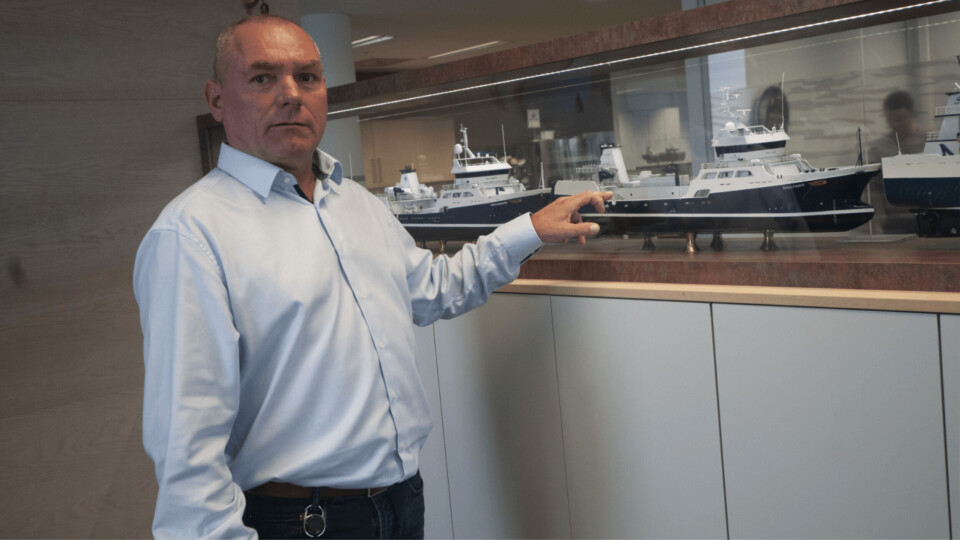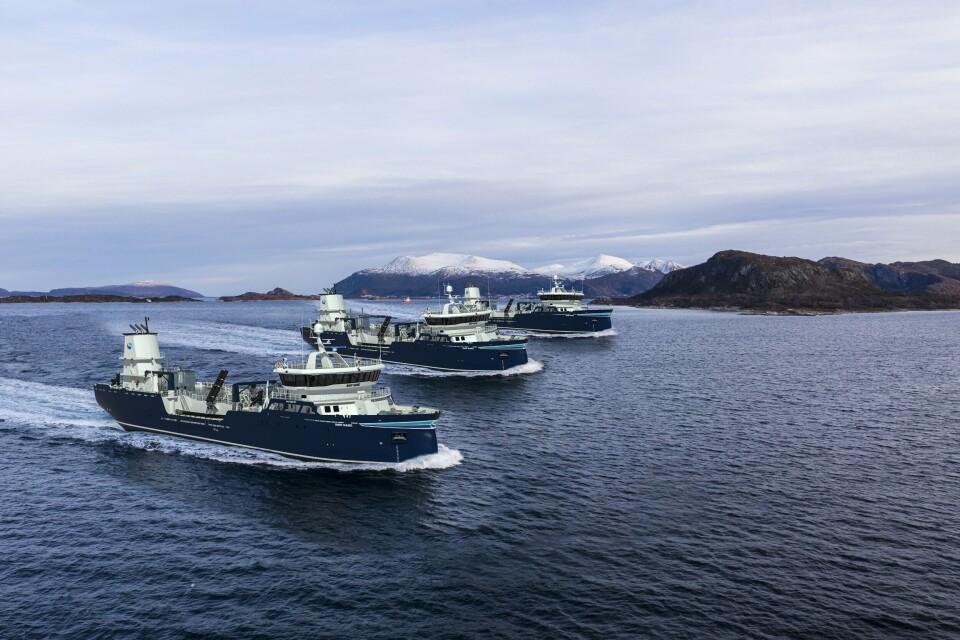
Sølvtrans to spend £647m on 20 new wellboats
The world’s biggest wellboat operator, Sølvtrans, plans to have 20 ships built over the next five years at a price tag of around NOK 8 billion (£647m).
“We are facing a comprehensive investment programme,” says Sølvtrans founder and chief executive Roger Halsebakk.
In an interview in Fish Farming Expert’s sister publication, Norsk Fiskeoppdrett (Norwegian Fish Farming) magazine, he talks with Sølvtrans communications manager and public relations officer Harald Tom Nesvik about both the big plans and what believes is important in developing the wellboat industry in the years to come.
Too much demand
Sølvtrans will build 20 new boats over the next five years. These will be in addition to the existing 19 they have.
“From 2012, we had got rid of all old tonnage, and all boats we have now are 1,000 tons and up,” said Halsebakk.
“The challenge today is that we have too high a utilisation rate of the ships we have. They are in operation between 97 and 99% of the time. That means there is little time for maintenance, and there is always a battle with the farmers about when we can take boats out for the annual week at the shipyard for servicing. With new boats, we hope to reduce this utilisation rate to at least 95%, perhaps as low as 90%.”

Not reliant on lice
He is not concerned that the company could be left with harmful overcapacity.
What if you eventually manage to control lice in such a way that you are no longer so dependent on wellboats?
“It worries us little. Lice treatment currently accounts for 6-7% of our turnover. Other wellboat companies are bigger on this than us. In addition, there are many specialised service boats for the purpose that did not exist before.”
1,000% smolt biomass increase
At the same time, there is another factor that will increase the need for wellboats in the future, says Halsebakk.
“Previously, 70-80 grams smolts were released in two concentrated rounds, spring and autumn. Now, the industry is investing in post-smolts of up to 1kg which will be released throughout the year. The growth in the smolt biomass may be 1,000% compared to before.”
“And then you have rolling MTB (maximum biomass), amoebic gill disease treatments with fresh water and other acute incidents that can occur related to, for example, jellyfish or algae,” says Nesvik, who returned to his old job with Sølvtrans following a stint as Norway’s fisheries minister.
Norwegian yards
In order to realise the plans, Sølvtrans has entered into contracts with the two Norwegian shipyards Aas Mek. and Myklebust Verft. The yards will each be able to build two boats per year until 2025. So far, contracts for seven of the 20 newbuild vessels have been signed.
“We want to build locally, it is important for us to use the local business community,” says Halsbakk. “We also believe that the local shipyards have the highest competence and deliver the best quality.
“The total sum of all the boats will be around NOK 8 billion, slightly depending on which sizes of the boats we choose. The only thing that is not to be built in Norway is the hull itself. It accounts for between 20% and 25% of construction costs.”
“At Aas we will build boats of 3,000m³ capacity, while at Myklebust boats will be built of 4,000m³, maybe also 5,000m³,” says Halsebakk.
New delivery
The company took delivery of its newest wellboat, Ronja Christopher, from Aas Mek. yesterday.
The vessel is 69.86 metres long and 17.8 metres wide.
It has a capacity of 2500 m³ and will be dedicated to smolt transport. On Thursday evening, the vessel sailed north to Bømlo under a long-term contract for Bremnes Seashore.
The boat’s sister ships, build numbers 199 and 200, were delivered to Sølvtrans in July and December last year.
This design has a low draft in relation to the loading capacity, specially adapted for the transport of smolts and post-smolts with calls at smolt facilities and areas that can be difficult to access with a deeper draft.























































